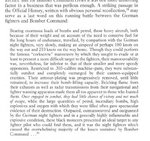Lucky13
Forum Mascot
Cheers Joe! Just trying to get in the know here, not being a pilot etc. Being that the B-29 flew up 33.600 feet/10.200meters one would, or at least me, assume that they'd fly at maximum height to avoid fighters, in this case Luftwaffe, had they operated in ETO. Just thinking here that the Ta 152H being the only operating at that height 48.550 feet/14.800 meters...with GM-1 boost though, and in only a short period.




